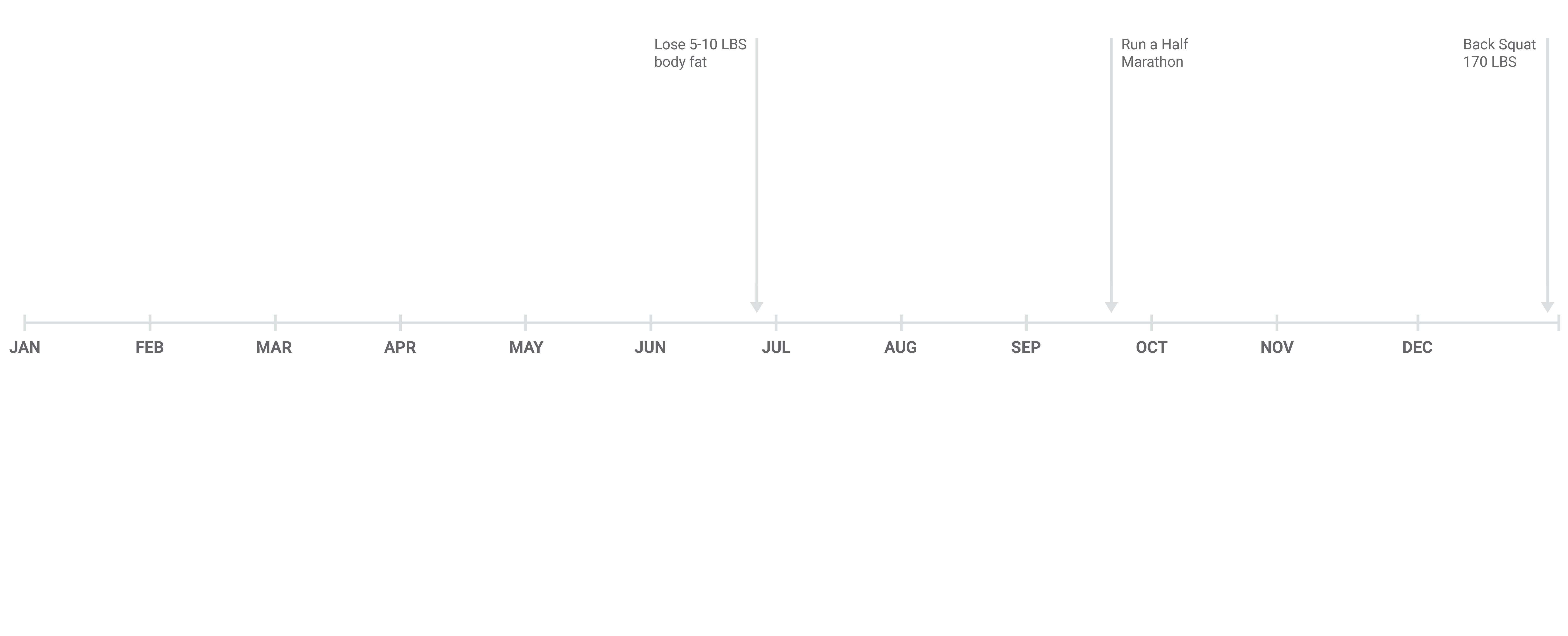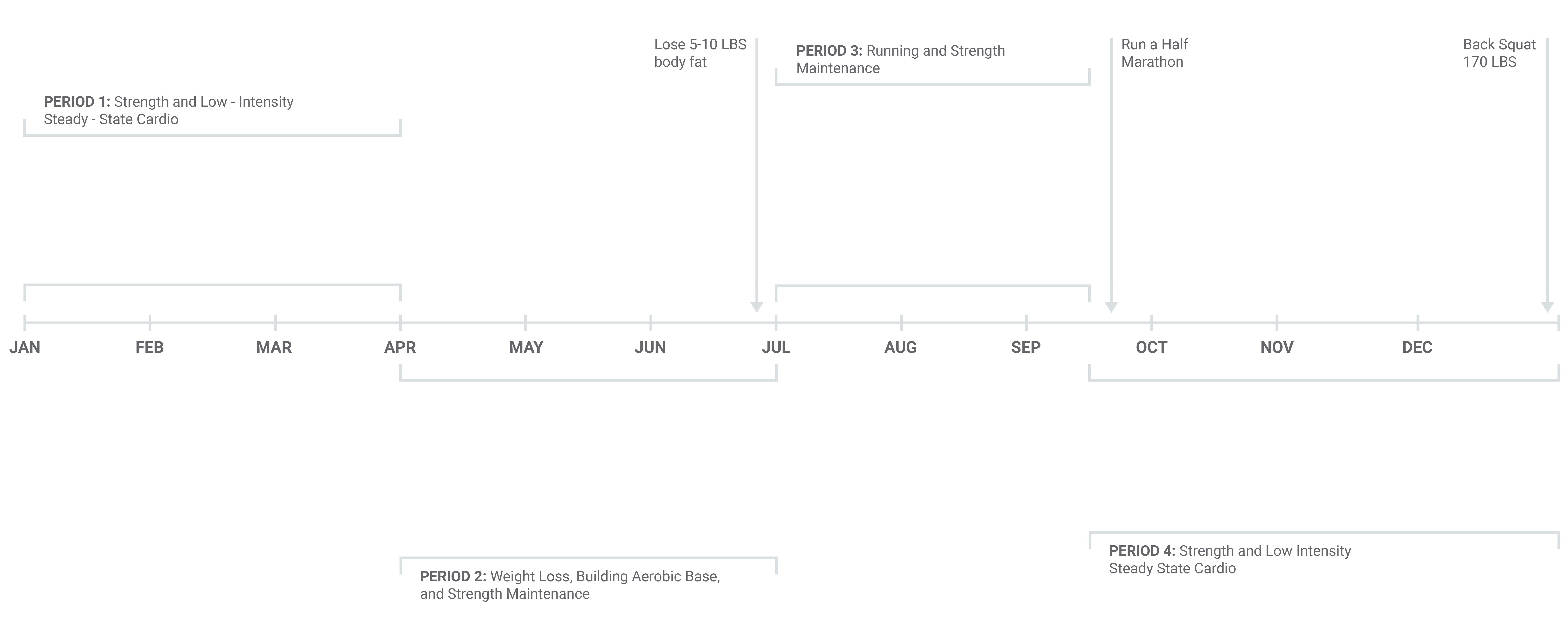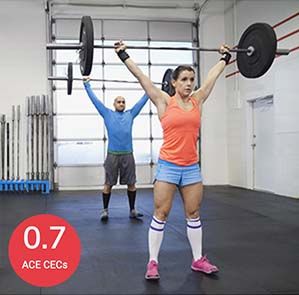5 Steps to Creating a Long-term Periodization Program for Your Clients

As a health and exercise professional, it can be easy to get caught up in the moment of taking a client through a workout and lose sight of how that workout might impact their longer-term goals. Periodized training programs can help you create a plan that goes well beyond a single workout and instead offers a roadmap for how your clients can reach their goals. Applied correctly, periodization can elicit optimal results in terms of muscular and cardiorespiratory fitness, and any other health and fitness goals your clients may be striving for.
Of course, creating an effective periodization program requires both planning and knowledge. This article presents best practices for putting together a periodized plan that follows the principles of the ACE Integrated Fitness Training® (ACE IFT®) Model over the course of a year. Armed with this knowledge, you can create fun and effective workouts that will keep your clients engaged and, importantly, steadily moving toward their goals.
What is Periodization?
The word “periodization” means the division of time into smaller periods or timeframes. In practical application, for example, this might mean dividing a year into four three-month blocks or 12 one-month blocks. Periodization is frequently applied in classic strength and conditioning settings, but it also can and should be applied to the programming you create for your clients.
Periodization is effective, in part, because it allows the body to adapt to a given stimulus maximally in a specific amount of time. The human body is incredible and can certainly adapt to many things at once, but the largest and most dramatic adaptations will come by focusing on just one stimulus at a time. For example, while your client may have goals related to gaining muscular strength, losing weight and increasing their running endurance, you might opt to focus on one at a time rather than attacking all three goals at the same time. Again, this isn’t to say it’s impossible to make gains in all three areas at once, because that certainly is possible. But, by taking a focused approach through periodization, your client will experience a greater amount of progress in each area so that at the end of the larger periodization cycle, they’ll have made greater overall progress toward each goal.
In addition to physical adaptations, periodization may also take into account a variety of external factors, such as the seasonality of local weather, client work and life schedules, and the timing of events that might align with your client's current goals. For example, many people live in areas where it is not possible or realistic to run outside year-round. The local weather of the area might lend itself more to outdoor running in the late spring, summer and early fall, when days are warmer and longer. Conversely, the winter months have shorter and colder days, with snow and ice making indoor activities more appealing. Due to this seasonality of weather, a natural periodization may take place where more running and endurance activities happen in the warmer months, while more muscular strength and power activities occur in the colder months. Rather than fighting against this natural cycle, a well-applied periodization plan allows a client to maintain and gain fitness in their pursuit of goals all year long. This means constant progress rather than burnout or plateaus.
Of course, periodization only works if it is applied correctly, so how do you do this in a seamless and thoughtful manner? It all comes down to five clear steps, starting with identifying your client’s goals and ending with the creation of a full year-long plan.
Step 1: Identify your client’s goals.
Taking the time to help your clients identify and create SMART goals (specific, measurable, attainable, relevant and time-bound), is critical in the work you do as a health and exercise professional. “Clarity is kindness,” Brené Brown, famed author of Daring Greatly, says, and that could not be truer in this line of work. Spend time asking as many questions as necessary to clarify your client's goals and to better understand their motivation for wanting to achieve those goals. The ACE IFT Model provides a client-centered approach to having this goal-setting conversation. With this information, you can construct a fitness plan for your client based on their goals and needs.
Let’s say you are starting to work with a client who used to be a collegiate soccer player and is now in their early thirties. Since graduating from college, they have worked out off and on, but have never really had any clear direction. They are still moderately fit but nowhere near as fit as they were as a collegiate athlete. During your goal-setting conversation, your client might at first tell you that they would like to get stronger, lose five to 10 pounds (2.2 to 4.5 kg) and run a half marathon. You then spend some time asking questions, gathering information and increasing understanding—both yours and your client’s—of these goals. Through the conversation, your client’s generalized goals crystalize into the following specifics:
- Back squat their body weight. Your client can currently perform three squats with 135 pounds (61 kg) of external load. Their goal is to squat their current body weight, which is 170 pounds (77 kg). They understand this might be more of a slow process goal, but they like having that to work toward.
- Lose five to 10 pounds (2.2 to 4.5 kg) of body fat. Your client understands that a collegiate athlete body is different from an everyday person body. However, they want to lose some of the weight they have gained since leaving college so that they can later progress to working in a performance training zone.
- Run a half marathon. Your client doesn’t yet have a specific race in mind, but this is an important goal because they want to feel more comfortable with outdoor running after so many years of disliking it when they were a collegiate athlete. Your client’s partner also happens to be an avid runner, so your client would like to be able to go on the occasional run with them and believes improving their fitness level will make the experience more enjoyable.
Step 2: Establish a timeline and date for each goal.
Now that you have a clear understanding of your client’s objectives and reasons for training, it’s time to put pen to paper and lay out their goals over the next year. For simplicity, let’s start with January and end with December, but this truly could start and end at any point in time. Also, keep in mind that, in some cases, these goals might span more than just one year. If you have a client who wants to deadlift 300 pounds (136 kg), for example, but they can currently deadlift just 100 pounds (45.5 kg), this goal might take more than a year to accomplish. However, you can still apply these periodization concepts to that longer timeline.
Figure 1 depicts what our sample client’s timeline might look like.
Note: Click on the image to see the full figure detail.
Figure 1. Sample one-year timeline for a client who wants to lose weight, run a half marathon and back squat 170 pounds (77 kg)
Step 3: Divide the year into “seasons” and assign a primary focus to each one.
Once you’ve given your client’s goals clear checkpoints, you can break the timeline down even further into “seasons.” These assigned seasons need not align perfectly with weather seasons, but there should be some consideration of how weather patterns might affect training conditions. Figure 2 shows how you might break down your client’s program into four distinct seasons and the goals for each one.
Note: Click on the image to see the full figure detail.
Figure 2. Sample quarterly breakdown of the periodized training program. January to March focus: muscular training and low-intensity steady-state cardiorespiratory training. April to June focus: weight loss, muscular-training maintenance and base cardiorespiratory training. July to September focus: cardiorespiratory training (i.e., running) and muscular-training maintenance. October to December focus: muscular training and low-intensity steady-state cardiorespiratory training.
Step 4: Break each season into shorter, three- to five-week blocks of time and assign a sub-focus that is in line with the main focus.
With each seasonal focus in mind, you can divide the training program into three- to five-week blocks during which your client can train in an even more focused manner and build toward the big-picture goals (Figure 3).
The last week of each block should be a de-load week. This week is easy to neglect because it can feel unnecessary or like a waste of time; however, these are the weeks that allow the client’s body to recover and fully adapt from the demands of the previous weeks. The benefit of a de-load week largely lies in giving the client time to clear fatigue from the previous weeks they spent building up training volume and intensities.
In addition to providing time to recover physically, this de-load week offers your client time to do a mental reset so they can continue pushing their intensity and training loads in the weeks and months to come. Take time to help your client understand the reasoning for these weeks so they buy in to why these weeks will feel different. Remember, a de-load week is not a week off from training, but rather a shift in volume and intensity to promote the body’s adaptation. For those focused on building muscular strength, this may involve keeping a high intensity but cutting overall volume in half. For runners, it might mean keeping the overall mileage the same but decreasing the amount of speed or tempo work.
Note: Click on the image to see the full figure detail.
Figure 3. Sample timeline featuring three- to five-week training blocks and de-load weeks
Step 5: Build out each block with specific details.
Once you have created your client’s periodized timeline, you can focus on building each block according to how many days and hours your client will be able to train each week. This is where you can be particularly creative in how you approach your client’s goals. By focusing on smaller, “bite-sized” goals for each block, you can chip away at the bigger goals your client is looking to achieve.
It is helpful to build out these blocks well in advance, and then review them right before the start of the block in real-time. This allows you to carefully consider if the training block is actually written in the best way for your client. As you do this, think about what is realistic for your client, what makes them happy in training, what will challenge them and how much time they have to commit to training each week.
Planning to Succeed
Ultimately, a successful training program comes down to taking a focused and directed approach toward a specific goal, and periodization is a method that can assist in that process. A thoughtful progression of load and intensity within any exercise modality will elicit the greatest response from the human body. With a periodized plan, you can better manage training loads for your clients and can help them achieve a variety of goals throughout a year without experiencing burnout. Take the time to follow these steps in building your next client’s training plan and you’ll be able to watch the payoff unfold in the coming year. In the meantime, you and your client can look forward to celebrating victories, both small and big, all year long.
Expand Your Knowledge
Exercise Programming Toolkit – Course Bundle
The ACE Integrated Fitness Training® (ACE IFT®) Model is a program design blueprint that has evolved with the needs of today’s exercise professionals and their clients. The ACE IFT Exercise Programming Toolkit course bundle explores the different components of the ACE IFT Model, including the ACE Mover Method, to help you develop safe and effective exercise plans. By gaining an understanding of how to move through the phases of the ACE IFT Model, you will be able to effectively educate clients and gain their trust, keeping them safe as they move toward their goals.
Programming for Strength Gains
New studies, new approaches and new techniques seem to emerge every day. It can be tough to keep up with the latest changes when you’re focused on changing your clients’ lives. The Programming for Strength Gains course teaches you how to combine emerging strength training science with your existing program—and learn how to take your clients’ fitness to the next level.











